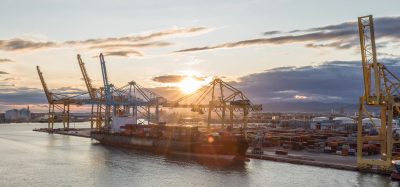Injecting infrastructure investment
Posted: 20 September 2012 | | No comments yet
In the 1980s, air travel captured the market share from rail travel. This is no longer the case as since the 1990s, rail travel has gradually taken back the market share. Between 2000 and 2010, passenger kilometres in Sweden grew by more than 50%, with a particularly robust increase after 2005 – a trend that is partly related to SJ’s transition from a state-run service to a commercial enterprise.
We all remember when SJ received a SEK 1.8 billion government grant to avert bankruptcy. Following this, the incorporated SJ has been profitable and the entire railway sector has completed a turnaround – a 150-year-old industry was reborn. Modern business practices have increased travel by approximately 5% per year.
In the 1980s, air travel captured the market share from rail travel. This is no longer the case as since the 1990s, rail travel has gradually taken back the market share. Between 2000 and 2010, passenger kilometres in Sweden grew by more than 50%, with a particularly robust increase after 2005 – a trend that is partly related to SJ’s transition from a state-run service to a commercial enterprise. We all remember when SJ received a SEK 1.8 billion government grant to avert bankruptcy. Following this, the incorporated SJ has been profitable and the entire railway sector has completed a turnaround – a 150-year-old industry was reborn. Modern business practices have increased travel by approximately 5% per year.
In the 1980s, air travel captured the market share from rail travel. This is no longer the case as since the 1990s, rail travel has gradually taken back the market share. Between 2000 and 2010, passenger kilometres in Sweden grew by more than 50%, with a particularly robust increase after 2005 – a trend that is partly related to SJ’s transition from a state-run service to a commercial enterprise.
We all remember when SJ received a SEK 1.8 billion government grant to avert bankruptcy. Following this, the incorporated SJ has been profitable and the entire railway sector has completed a turnaround – a 150-year-old industry was reborn. Modern business practices have increased travel by approximately 5% per year.
Injecting infrastructure investment
It is an unparalleled development that today imposes major demands on operators and particularly on tracks and trains. Consequently, it is positive that the Swedish government is going ahead with its investments in infra – structure. I am pleased to see that rail issues are gaining increased attention and the investments are being welcomed throughout the industry – SJ is not the only operator that would prefer its trains to run on well-maintained tracks. There is undoubtedly some good use for the extra SEK 800 million that was allocated to infrastructure maintenance in 2011 and the additional SEK 3.6 billion earmarked for 2012 and 2013. The injection is particularly helpful in metropolitan areas where Sweden has its major, vital socio-economic centres of growth.
This development is positive from the perspective of sustainability, in that journeys are moving away from less sustainable types of transport to trains, which have a limited environmental impact and are an unbeatable mode of travel in terms of safety, and new behavioural patterns are accompanying this trend. The availability of efficient transportation allows us to work far from home. Commuting clusters, mostly around metropolitan areas, are being combined with new lifestyles. The modern, ‘urban’ person switches between modes of transport in an entirely new manner. Bicycle, bus, metro, car, train, flight, commuter train, tram and local rail are all part of the transportation mix used by many more people today than in previous years.
Investing in the future
We must protect and maintain the infrastructure we have today and it is therefore high time to invest in the future. It is vital to continue to invest in infrastructure in general and the rail network in particular because it is essentially only railbound traffic that can solve our growing mass transportation needs, not least in Sweden’s three growth regions around Stockholm, Gothenburg and Malmö.
We expect the population in these regions to grow by 500,000 by 2020 and Sweden by a full million by 2030. With this rate of growth and development, we will reach our capacity ceiling, thus making the system vulnerable. So, regardless of the status of the current rail system and other modes of transport, the railway network needs to be built out.
High-speed
In the most industrialised countries in the world, high-speed tracks that can carry trains travelling at 250km/h or more have been built, or are in the process of being built. France was first and we can see that high-speed trains are an alternative to air travel for journeys up to 600km. When the journey time falls below the two-hour mark, air travel can be replaced entirely, although in many cases the various modes of transport work in unison. In Japan, the market share of high-speed trains is a full 30%.
Belgium has four high-speed lines, while France has eight, with two more under construction and plans to build a further 16. In Italy, there are seven lines and two in the planning stage. Germany has 10 high-speed lines, three under construction and six on the drawing board. The Netherlands has one highspeed line, Poland two, Portugal six, Spain 12, Switzerland one and two in the UK.
In total, we can travel on some 6,650km of rail in today’s society, with an additional 250km to be added in the foreseeable future, giving us a European high-speed network stretching from Birmingham in the northwest to London, Paris, Lyon and Montpellier, Bologna, Florence, Turin, Rome and Naples in the southeast. And from Madrid in the southwest to Malaga, Seville, Barcelona, Perpignan, Brussels, Rotterdam, Hannover, Mannheim, Stuttgart, Frankfurt, Leipzig, Hamburg, Berlin, and Krakow in the northeast. A scenario whereby all of these are connected, with Sweden playing its part and taking responsibility for the Scandinavian section of the trans-European high-speed network, is not only a dream, but entirely possible.
We believe that high-speed trains are no longer exclusive to the most developed industrialised countries, but rather a solution to transportation and environmental problems, and a means for driving development in a country. Cutting journey times by one third creates new patterns, new businesses and new opportunities. It is a powerful dynamic – we see each time it succeeds – and it is within reach here in Sweden. A courageous and bold approach to this issue would have hugely positive implications for Swedish competitive – ness and could prove to be as strategically significant as the decision to build the Swedish railways nearly 150 years ago.
About the author
Jan Olson has been employed at SJ AB since 2003 and was previously the Director of Business Development, but is now the CEO.








